Fall Essential Oil Blends for Soaps (Plus A Fall Soap Recipe)

Looking for fall essential oil blends for soaps? Try one of several great essential oil blend recipes in your fall inspired soaps this autumn. Plus learn how to make my easy fall soap recipe. Decorated with cute leaf embeds, this cold process fall soap recipe with cocoa butter is the perfect choice for daily cleansing as temps cool down and the stifling humidity of summer dissipates.
Plus discover natural skin care recipes for fall including pumpkin spice bath bombs, DIY sugar scrubs, vanilla chai latte lotion bars and rebatched apple pie spice soap!
Crafting Fall Soaps with Essential Oils
Fall is more than just pumpkin spice. So if you’re looking for creative ways to scent your fall soaps, then you’ve come to the right place.
Essential Oil Safety Tips
There are a number of fall essential oil blends for soaps that you can use in your homemade soap recipes for a natural fragrance. However, it’s important to keep in mind that some essential oils, while they may smell amazing, aren’t always skin friendly.
Cinnamon bark essential oil, for example, is not skin safe. It causes skin irritation and therefore should not be used homemade soaps or skin care recipes. On the other hand, cinnamon leaf essential oil, while also an irritant can be used as a small percentage of your recipes when properly diluted – sans those sensitive parts and mucous membranes. However, I know that I am allergic to cinnamon essential oil. Even in small concentrations as part of a fragrance oil, it makes my skin red, irritated and itchy when used in soaps. So it’s important to perform a patch test on skin prior to using oils that are known irritants.
It may be that you choose to avoid using cinnamon leaf essential oil in order to avoid possible skin sensitivities when making soaps for your family. Therefore I’ve chosen to include several fall essential oil blends for soaps that omit cinnamon essential oil entirely.
There’s so much to learn about essential oils. Not only are some essential oils, such as cinnamon, known skin irritants, many are also not safe to use when pregnant. While other essential oils should not be used on children, are or if you have certain medical conditions.
Certain essential oils, including most citrus oils, can also be phototoxic. Therefore care should be taken to cover skin and use sun protection when spending time outdoors. Pets can also be affected by essential oils being diffused in your home. So follow up with your vet on which essential oils are not pet safe to avoid causing harm to your pets. You also should never leave your pets in a closed room with an essential oil diffuser.
Where to Learn More
If you aren’t sure whether an essential oil is a skin irritant or not – unfortunately many of the scents for fall have the potential to be – you can check out the essential oil profile for each of the essential oils in these fall essential oil blends for soaps at Mountain Rose Herbs to learn more. You can also discover more tips for safely using essential oils here as well as an essential oil dilution chart here.
I’m so excited to use my own custom fall essential oil blends for soaps in upcoming recipes. Any one of these essential oil blends is the perfect match for my fall soap recipe with cocoa butter. So pick your favorite to customize the perfect homemade soaps for your family this fall! Or, if buying multiple essential oils is outside of your reach financially at this time, try out my fall soap recipe with your favorite seasonal, fall fragrance oil instead.
Fall Essential Oil Blends for Soaps
Ready to bask in your favorite fall scents as part of your morning bath routine? Following are a number of my favorite fall essential oil blends for soaps. They can be used in both cold process soap recipes as well as melt and pour soap recipes and hot process soap.
As these fall essential oil blends for soaps contain essential oils that can irritate skin if not properly diluted, I don’t recommend using more than .5% (or a half percent) in your soap formulations for those containing a high percentage of spice essential oils such as cinnamon and clove. However you can increase the amount up to 2% maximum for fall essential oil blends that either omit those essential oils or that are used in lower concentrations in a scent blend. Essential oils such as patchouli, lavender and frankincense have higher usage rates as they are generally skin safe and not irritating.
Additionally, if you’re looking to get more bang for your buck scent wise, you may find you can use a smaller percentage of fall essential oil blends in melt and pour soap recipes as well as hot process soaps. Alternately, you can also pop your soaps in the fridge, if you are making cold process soap, to prevent gel phase. (You can learn more about the gel phase in soap making at Lovin’ Soap here.)
Autumnal Bouquet Essential Oil Blend
- 5 parts clove bud essential oil
- 3 parts sweet orange essential oil
- 2 parts allspice essential oil
Chai Tea Latte Essential Oil Blend
- 3 parts cardamom essential oil
- 2 parts cinnamon leaf essential oil
- 2 parts vanilla absolute
- 1 part ginger essential oil
Pumpkin Spice Fall Essential Oil Blend
- 4 parts cinnamon leaf essential oil
- 4 parts ginger essential oil
- 4 parts nutmeg essential oil
- 3 parts clove bud essential oil
- 1 part cardamom essential oil
Fresh Baked Gingerbread Essential Oil Blend
- 4 parts ginger essential oil
- 2 parts cinnamon leaf essential oil
- 2 parts clove bud essential oil
- 1 part vanilla absolute
Earth & Spice Fall Essential Oil Blend
- 8 parts cedarwood essential oil
- 4 parts lavender essential oil
- 3 parts ho wood essential oil
- 3 parts nutmeg essential oil
- 2 parts patchouli essential oil
Patchouli Lovers Fall Essential Oil Blend
- 10 parts patchouli essential oil
- 4 parts lemon essential oil
- 3 parts nutmeg essential oil
- 3 parts black pepper essential oil
Mulled Cider Fall Essential Oil Blend
- 4 parts sweet orange essential oil
- 2 parts cinnamon leaf essential oil
- 1 part ginger essential oil
- 1 part anise seed essential oil
Frankincense Fall Essential Oil Blend
- 10 parts frankincense essential oil
- 5 parts clove bud essential oil
- 3 parts ho wood essential oil
- 1 part peppermint essential oil
- 1 part spearmint essential oil
Fall Colors Essential Oil Blend
- 1 part fir needle essential oil
- 1 part frankincense essential oil
- 1 part patchouli essential oil
- 1 part sweet orange essential oil
Fall Garden Wreath Essential Oil Blend
- 2 parts fir needle essential oil
- 2 parts rosemary essential oil
- 2 parts eucalyptus essential oi l
- 1 part lavender essential oil
- 1 part peppermint essential oil
Simple 2-Ingredient Fall Essential Oil Blends
Not quite ready for the more complex fall essential oil blends? Try one of these simple two-part essential oil blends in your homemade soaps or even your essential oil diffuser at a one-to-one ratio. For soap making, I recommend using the Lavender 40-42 essential oil as it is standardized oil used in the perfume and fragrance industry. Primarily used for soap and candle making, it’s important to note that lavender 40-42 is not intended for therapeutic use.
- Equal parts lavender & rosemary essential oil
- Equal parts lavender & orange essential oil
- 5 parts bergamot & 3 parts vanilla absolute
- Equal parts lavender & fir needle essential oil
- Equal parts bergamot mint & fir essential oil
Formulating a Fall Soap Recipe
As the seasons change from summer to fall, the air outside becomes drier and cooler. Our skin feels the environmental effects from this change and as a result it can also feel dry or itchy. Therefore you may find you need to switch up a number of your skin care products to account for this. I always find that I need to make a simple soap swap to negate the effects of the changing seasons. My easy fall soap recipe is perfectly suited for this time of year. It’s formulated so it won’t strip skin of the beneficial oils your skin needs to look and feel healthy as we make the transition from hot summer weather into the fall season.
My easy fall soap recipe is easy to make. It includes just four soap making fats – castor oil, coconut oil, cocoa butter and pomace olive oil. Perfect for both body and facial skin care, this homemade soap recipe contains a whopping 25% cocoa butter to condition skin in addition to 45% olive oil. While this fall soap does contain a high percentage of olive oil, you’ll find that the higher percentage of cocoa butter not only conditions skin, it also helps the bar harden faster. Thereby reducing the long cure that often comes with Castile and Bastille soap recipe.
How to Add Fall Essential Oil Blends to Your Soaps
To scent your soaps, you can make up a master batch of your chosen fall essential oil blends for soaps above. Then add your essential oil blend to your soap batter at a light trace. Alternately you can also substitute the fall essential oil blend with a fragrance oil of your choice. Typically fragrance oils have a usage rate of around 5% for homemade soaps. However, some fragrance oils have a lower usage rate so be sure to refer to manufacturer guidelines when determining the amount of fragrance you need for your fall soap recipes.
You should also be aware that some essential oils, such as black pepper, may increase trace. Typically, if I know an essential oil will hasten trace times, I add it to the oils prior to mixing the soap making oils with the lye. However, should your soap seize on you, don’t give it. As it heats up it will go into gel phase and your fall soap batter will start to look translucent. At this points you’ll be able to remix the soap batter as you would if you were making hot process soap. Once the soap looks a bit like mashed potatoes, it’s ready to go into the mold.
Essential Oil Fall Soap Recipe
© Rebecca D. Dillon
Ingredients for Fall Soap Embeds:
.8 oz. castor oil (10%)
1.6 oz. coconut oil (20%)
2.6 oz. cocoa butter (25%)
3.6 oz. pomace olive oil (45%)
2.85 fl. oz. distilled water (36% of oil weight)
1.05 oz. sodium hydroxide/lye (8% superfat)
.05 oz. fall essential oil blend, of choice (about .5%)
1/2 teaspoon apple green moss mica, or desired color
1/2 teaspoon copper sparkle mica, or desired color
Ingredients for Fall Soap Loaf:
2.4 oz. castor oil (10%)
4.8 oz. coconut oil (20%)
6 oz. cocoa butter (25%)
10.8 oz. pomace olive oi l (45%)
7.9 fl. oz. distilled water (33% of oil weight)
3.25 oz. sodium hydroxide/lye (6% superfat)
.15 oz. fall essential oil blend, of choice (about .5%)
1 Tablespoon turmeric powder, or desired mica color
additional mica to swirl, if desired in color of choice
Fall Essential Oil Soap Making Notes:
If you’d like to incorporate soap embeds into your fall soap loaf, you will need to make these ahead of time. As the silicone leaf soap mold I chose had lots of smaller nooks and crannies, I did not apply a water discount to the recipe for embeds. However, this did mean I had to freeze my soap embeds the next day for about 3-4 hours to get them to come out of the mold cleanly.
I used this leaf soap mold for the embeds and this silicone loaf mold for the soap loaf. However, you can adjust this fall soap recipe to suit any size mold of your choosing. I also used a pumpkin shaped mold (and cut off the jack-o-lantern faces) to see what pumpkins inside the loaf would look like for two of my fall soap bars.
The embed soap recipe also has a higher superfat. Therefore it is soft enough that you can work with it like playdough to create custom shapes for soap embeds as desired. There is more than enough leftover soap to play with. Alternately, you can always use the same fall soap loaf recipe for both the embeds and the loaf.
To make both the fall leaf soap embeds, as well as the fall soap loaf scented with your favorite of the fall essential oil blends, you need to follow basic cold process soap making directions. Simply make the soap embeds first, per the cold process soap making instructions below. Then, once the embeds have hardened, you are ready to make the soap loaf. You can find more detailed cold process soap making directions here to further guide you on your soap making journey.
You need to follow all safety precautions when making cold process soap from scratch. This includes using heat safe containers and non-aluminum containers and utensils. Protective clothing and eyewear is also highly recommended.
How to Make a Fall Loaf Soap with Embeds
Now let’s make a loaf of homemade falls soaps with your favorite fall essential oils blends for soaps!
Begin by measuring out the water called for in the soap recipe. Pour into a heat safe container. Then use a digital scale to weigh out the lye into a separate container. Carefully pour the lye into the water in a well ventilated area. Then mix well until all the lye has dissolved and set aside. (This step can emit fumes. Therefore I recommend using an exhaust fan. Alternately, you can mix the lye into the water outdoors.)
Next, weigh out all the soap making oils and butters. This includes the cocoa butter, coconut oil, castor oil and pomace olive olive. Combine the carrier oils and cocoa butter in a heat safe container. Then melt the ingredients on the stove, in a crockpot or at reduced power in a microwave. Once melted, remove the melted oils and cocoa butter from the heat source and set aside.
While the lye-water and soapmaking oils cool, weigh out the the fall essential oil blend you’ve chosen for your soaps into a glass measuring cup. (You should prepare a master batch of your favorite fall essential oil blends for soaps prior to starting the soap making process.)
Then measure out the mica powder or other cold process soap colorant of your choice into a small dish or container separate from the essential oil blend.
Once both the lye-water and soap making oils reach about 85°F-90°F, you’re ready to continue making my fall soap recipe.
For the soap embeds.
Mix the lye water and soap making oils together, using an immersion blender, until the soap batter reaches a light trace. Then pour half of the soap batter into another heat safe container. Add the green mica powder to one container and the copper mica to the other. Then mix separately and pour into your mold(s.)
For the soap loaf.
Start by adding the soap colorant (and the essential oil blend if desired) to the melted soap making oils and cocoa butter. Mix briefly with an immersion blender to distribute the additives throughout the oil mixture.
Follow with the lye-water. Then mix until you achieve a light trace.
Add the fall essential oil blend to the soap batter if you did not add it in previous step. Then continue mixing the soap batter until you reach a medium to heavy trace. (I overmixed my soap batter to be sure I did not get a false trace as my fall soap recipe calls for a high percentage of cocoa butter.)
Pour a small layer of soap into the bottom of the loaf mold, then add any embeds you’d like to appear inside your fall soap loaf. Then pour the rest of the soap batter into the loaf mold. Use a fork or other utensil to add designs to the top of the soap loaf as desired. Then place the remaining soap embeds onto the top of the soap loaf. Set aside.
You should be able to unmold your soaps after 24 to 48 hours. Once unmolded, cut the loaf into slices as desired. Then allow your fall soap bars to cure in a cool, dry location for four to six weeks. After which, you can wrap and label your soaps for personal use or to give as seasonal fall soap gifts.
If you’d like to sell the homemade soaps you create from my fall soap recipe, you need to follow good manufacturing practices (GMP) when making your homemade soaps. The book, Good Manufacturing Practices for Soap and Cosmetic Handcrafters by Marie Gale, is a valuable resource if you’re just getting started making your own homemade soaps, skin care products and cosmetics.
In addition to GMP, you also need to follow FDA guidelines for labeling your homemade soaps. If you’re unsure about the rules and regulations regarding labeling cosmetics, the book, Soap and Cosmetic Labeling: How to Follow the Rules and Regs Explained in Plain English by Marie Gale, spells out everything you need to know to legally label your products in the United States.
Love my fall soap recipe and collection of fall essential oil blends for soaps? Then be sure to pin this post to your Pinterest boards for later!
Creative Ways to Package Fall Soaps
Need ideas for creative ways to package your fall soaps you scented with your favorite fall essential oil blends for soaps? Check out this collection of soap packaging ideas to discover ways to use scrapbook papers, bakers twine, ribbon and other elements to elevate your fall soaps to the next level. There are also soap packaging ideas for using boxes and bags as well as tips for packaging round soaps. I also more ways to package soap here. Additionally, you can also find more inspiration for your soap packaging on Etsy here.
More Soap Recipes for Your Fall Essential Oil Blends
You can swap out the fragrance oils in other fall soap recipes with your favorite fall essential oil blends for soaps to customize your creations with natural fragrances. Here are some of my other fall soap recipes you may enjoy. Just be sure to reduce the amount of the fall essential oil blends your use in these soaps to between .5%-2% depending on the recommended usage rate for those essential oils.
- Homemade Apple Pie Melt & Pour Soap Tutorial
- Cold Process Pumpkin Soap Recipe with Real Pumpkin
- Moldable DIY Pumpkin Spice Melt & Pour Soap
- Pumpkin Pie Spice Melt & Pour Soap Recipe
- Hot Process Pumpkin Pie Soap Recipe
Not quite ready to try my fall soap recipe with your favorite fall essential oil blends? Then be sure to shop for handmade artisan soaps on Etsy here. I also have a huge collection of pumpkin spice bath and body favorites that you may enjoy. This collection includes not just seasonal fall soaps in pumpkin spice, but bath bombs, bubble bars, body butters, dry shampoo and more!
Fall Skin Care Recipes to Try
Once you’ve made homemade soaps for fall, be sure to check out some of these other fantastic fall skin care recipes for all over body care. You’ll find that your favorite fall essential oil blends will work great in these cool weather inspired homemade skin care recipes.
- DIY Sugar Scrub Cubes (3 Recipes for Fall)
Learn how to make three fall-inspired DIY sugar scrub cubes: fall bouquet, cinnamon churro and caffè mocha. These easy to make sugar scrub cubes exfoliate, moisturize and cleanse your skin all in one simple step. They’re made with melt and pour soap, shea butter and coconut oil for gentle cleansing. Plus, they’re scented with fall essential oil blends and dried flowers so they’re both non-toxic and all-natural. Get the recipes here.
- Apple Pie Spice Oatmeal Doughnut Soaps
Turn hotel soaps into adorable DIY apple pie spice oatmeal doughnut soaps for autumn with this easy soap making tutorial. These rebatched soaps are easy to make with bars of soap, ground oatmeal, and an apple pie spice fall essential oil blend. Learn how to make yours here.
- Vanilla Chai Latte DIY Lotion Bars
Turn your favorite fall drink into easy DIY lotion bars with this fall skin care recipe! These chai latte massage bars are made with all-natural moisturizing ingredients. The recipe includes traditional chai ingredients (and a hint of vanilla) to spice up your new go-to fall lotion bar. Get the recipe now.
- DIY Pumpkin Spice Bath Bombs (3 Fall Bath Bomb Recipes)
Celebrate autumn with three fall bath bomb recipes! Pumpkin spice, pumpkin spice latte and pumpkin pie bath bombs create cozy fall vibes while you relax in the tub. These easy homemade bath bombs are also made with fall essential oil blends and contain natural, moisturizing ingredients that hydrate your skin while you enjoy the aromatherapy benefits of the essential oils. Learn to make them now.
For more homemade soap recipes and essential oil ideas be sure to follow my boards on pinterest. You can also find me on your favorite social media platforms! Follow me on Blog Lovin‘, facebook, twitter and instagram. Or to receive my newsletter to stay in the loop.
Enjoyed the project?
Suggested materials:
- Castor oil
- Coconut oil
- Cocoa butter
- Pomace olive oil
- Distilled water
- Sodium hydroxide
- Fall essential oil blend
- Mica powder
The author may collect a small share of sales from the links on this page.

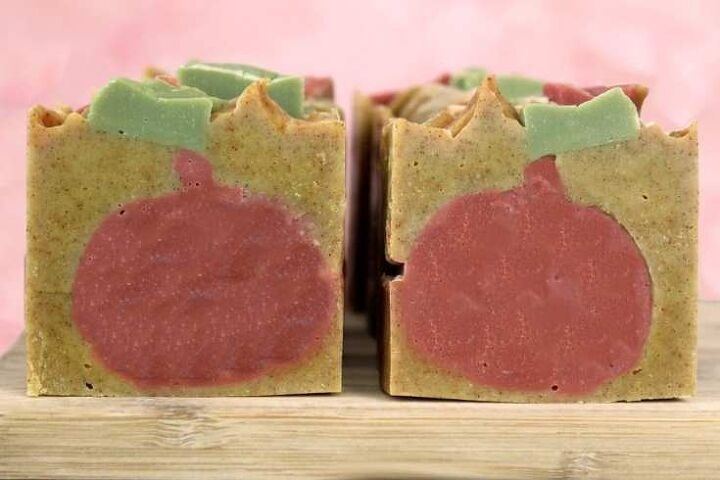
















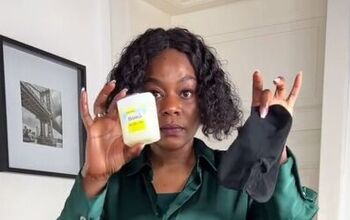
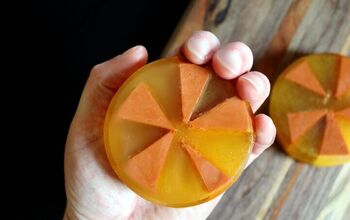
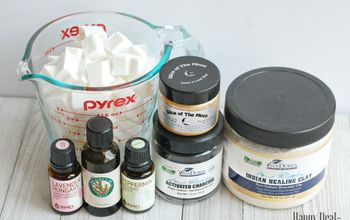



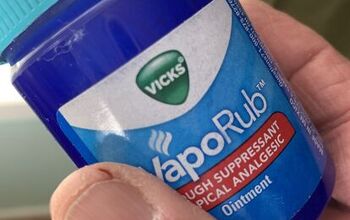


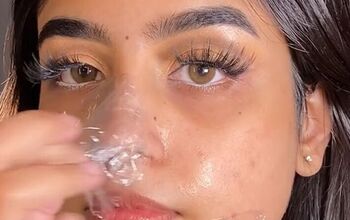


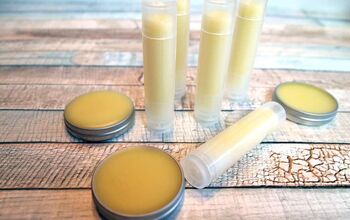
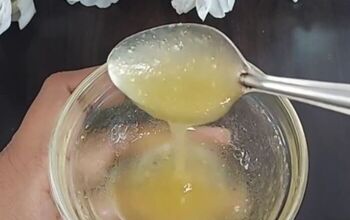
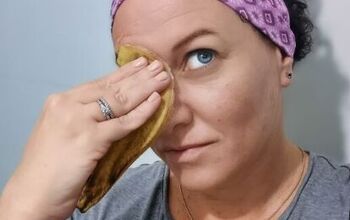
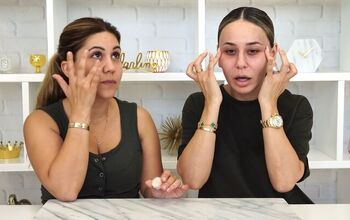
Comments
Join the conversation